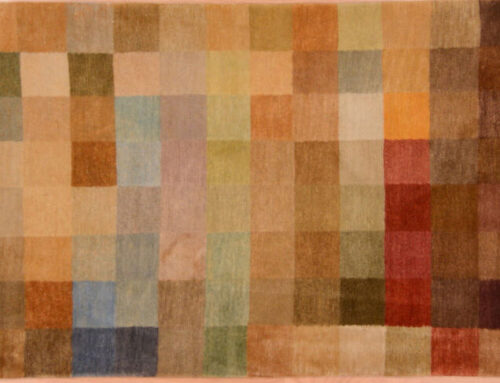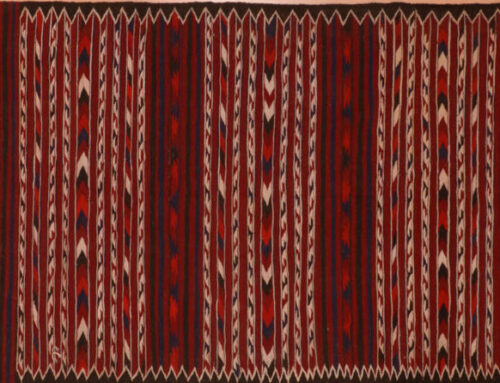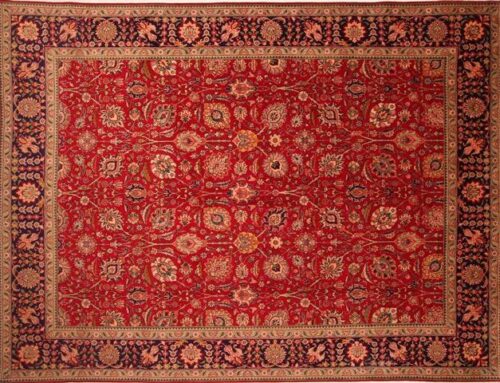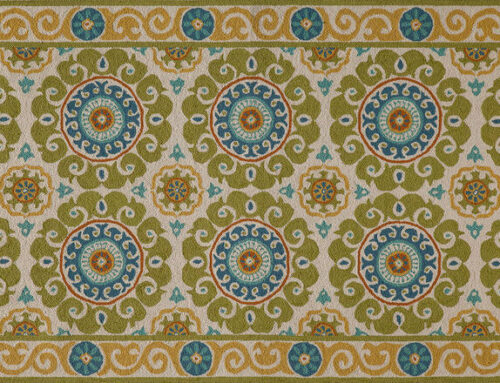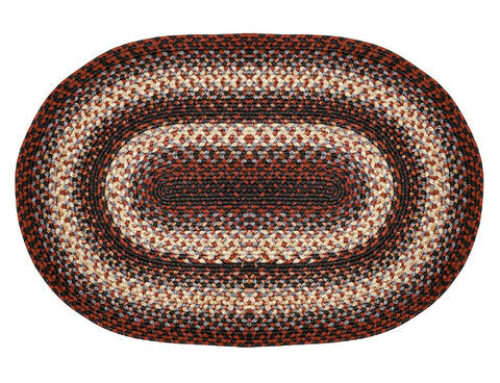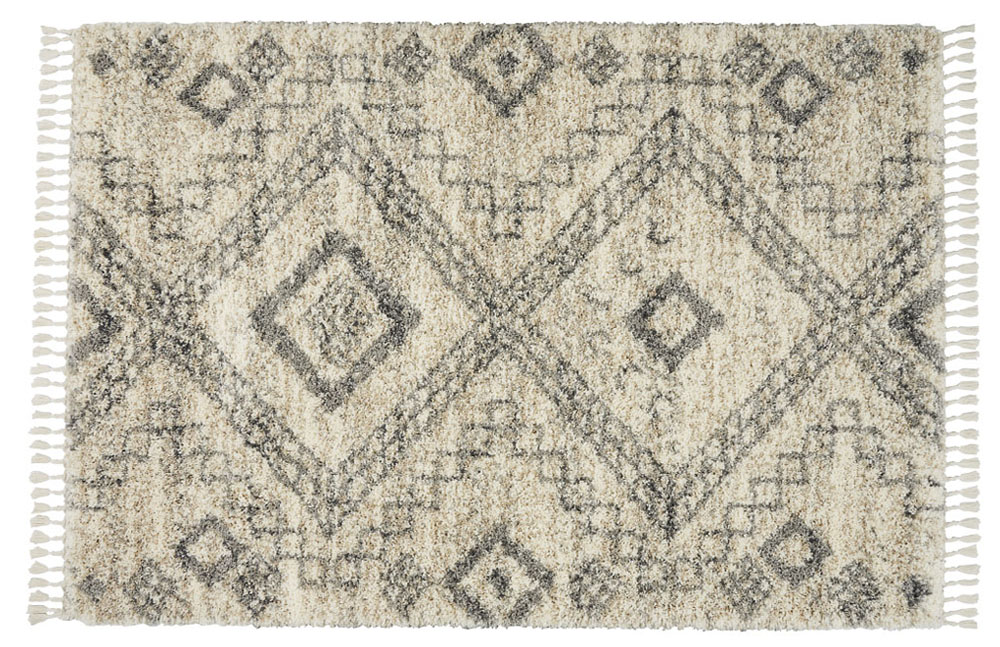
Scandinavian rugs are woven in the Nordic countries of Europe. Scandinavia consists of Denmark, Sweden, Norway, and Finland.
A popular rug type from this region is named Rya. Rya in the Swedish language means “shaggy.” This rug type was produced beginning in the early fifteenth century for warmth in the cold Scandinavian climate. Rya rugs were generally made in households and monasteries for personal use, although some were woven under royal court supervision. They were used for clothing, blankets, bed coverings, decorations, and insulation. Animal skins were initially used for these purposes but were heavier in weight and therefore dried less quickly in harsh weather conditions.
The oldest Rya rug was documented in an inventory list in Finland dating to 1495. Ryas were generally made in small sizes on narrow looms. At times, pieces were sewn together to make larger rugs. Notably, Nordic countries also made flatwoven rugs. In Denmark and Sweden, kingdoms also established tapestry workshops during the sixteenth century. By the mid-nineteenth century, industries in northern Europe advanced to include machines to make carpets, but the tradition of weaving Rya rugs as floor coverings continued.
Characteristics of Scandinavian Rugs
-
Material and Knots
The foundations are mostly sheep wool, but sometimes hemp was utilized for the weft. They have a wool pile tied with a Turkish (symmetric) knot. The rug quality is coarse since ten to twenty wefts were placed after each row of the knotted pile. This method gradually evolved and the weft rows decreased in order to improve the weaving quality.
-
Color
The background colors of early rugs were black or red, but additional colors were employed in the nineteenth century.
-
Design and Pattern
Early Rya rugs had a plain color or stripes in the background. Over the years, folk art motifs such as flowers, animals, birds, vases, people, letters, and dates were incorporated into the weave. By the sixteenth century, motifs from Anatolia (Turkey) began to appear in the rugs, a result of trading between the Nordic kingdoms and Constantinople.
In the second quarter of the twentieth century, Scandinavian countries began to produce new designs featuring the Art Deco Carpets style. These carpets were the height of fashion during that period and continue to be in demand in the Western market. Today many designers worldwide produce carpets with Scandinavian designs and coloration, marketing them successfully in Europe.1

